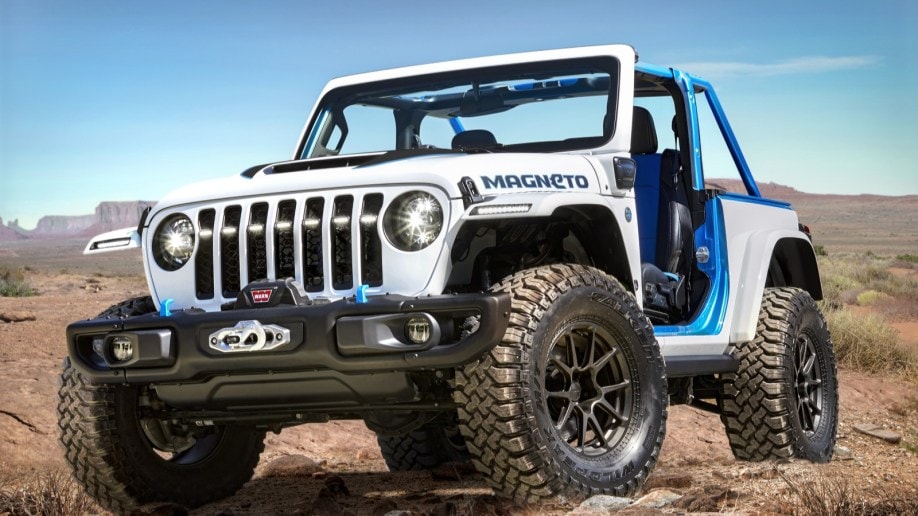Electric cars don’t work like conventional cars. Except this one.
Jeep has designed an electric version of its iconic Wrangler SUV that looks and functions much more like a conventional, gasoline-powered car than any electric vehicle currently on the market. It even has a manual transmission, complete with a working clutch pedal.
The Jeep Wrangler Magneto won’t be going on sale anytime soon. It’s a concept car – something manufacturers build to experiment with and explore possible future design directions. We rarely report on concept cars because they aren’t an option for car shoppers. But this one is unique enough to be worth a moment of your time.
A gasoline-powered car has one heavy engine providing the power, usually under the hood. It has a transmission transferring that power to the wheels. This may be a manual transmission the driver shifts, or an automatic transmission that shifts itself. It’s generally housed in a tunnel running down the center of the floor between the seats. And, in the case of a 4-wheel-drive (4WD) or all-wheel-drive (AWD) car, it has one or more transfer cases synchronizing the rotation of the axles.
An electric vehicle (EV) is different. It has a small electric motor directly attached to one axle; or, for 4WD or AWD cars, two small electric motors, one attached to each axle. No engine bay means no hood, though many EVs have a front trunk to preserve the shape we’re used to. It has no transmission, so the floor is flat. Also, there is no transfer case. The heavy batteries lie flat beneath the center of the vehicle, where they balance the handling and don’t get in the way of the passenger cabin.
This allows designers to create many unique new cars but means that iconic cars built around internal combustion engines don’t translate easily to an EV world.
Jeep Magneto – an EV like no other
For the Magneto, Jeep has done the difficult translation work. The motor is under the hood. This custom axial-flux motor puts out exactly the same power as the V6 engine available in today’s Wrangler (285 horsepower). The Magneto has a 6-speed manual transmission, with a clutch pedal necessary to switch between the gears (though you can start the vehicle without touching it). It uses the Jeep Wrangler Rubicon’s transfer case to give the driver ultra-low gearing options for off-road driving.
There are four lithium-ion batteries spread around the vehicle, each tucked into places where heavy components are usually found in gasoline-powered cars. The largest takes the place of the gas tank. Others reside under the hood and the rear storage compartment. One even fills the space where the muffler would otherwise sit.
Not for sale — yet
The Magneto won’t be available for sale anytime soon. Jeep has announced three years of testing for the vehicle. It’s important because it suggests that creative manufactures may find a way to produce electric versions of their most iconic vehicles … perhaps even versions that don’t compromise the enthusiast driving experience. It also suggests a new direction for the resto-mod market – shops that modify classic cars to perform like new vehicles without changing their classic looks.
Jeep will debut the Magneto next month at its annual Easter Jeep Safari, where it will tackle off-road challenges alongside conventional Wranglers and attract attention from dedicated Wrangler fans.








